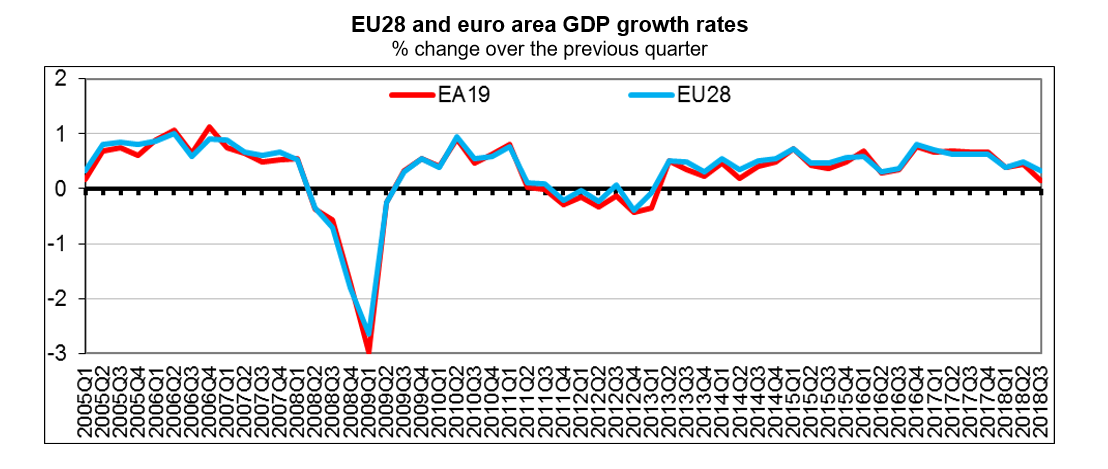Seasonally adjusted GDP rose by 0.2% in the Eurozone or Euro Area and by 0.3% in the European Union (EU) during the third quarter of 2018, compared with the previous quarter, according to a preliminary flash estimate published by Eurostat, the statistical office of the European Union. In the second quarter of 2018, GDP had grown by 0.4% in the euro area and by 0.5% the European Union.

Compared with the same quarter of the previous year, seasonally adjusted GDP rose by 1.7% in the Eurozone or Euro area and by 1.9% in the European Union in the third quarter of 2018, the lowest since 2013.

Separately, Italy’s economy ground to a halt in the third quarter as per data released by the Italian government as both domestic demand and trade flows failed to spur any growth. The European Commission rejected Italy’s draft 2019 budget last week because it broke European Union rules. The Italian Prime Minister Giuseppe Conte today said that zero growth in Italy justified its budget plans which were rejected last week.
Meanwhile, the European Commission said economic sentiment dropped in the Eurozone for the 10th consecutive month falling to 109.8 points in October from 110.9 in September – the biggest drop since March.
The Eurozone or Euro area includes Belgium, Germany, Estonia, Ireland, Greece, Spain, France, Italy, Cyprus, Latvia, Lithuania, Luxembourg, Malta, the Netherlands, Austria, Portugal, Slovenia, Slovakia and Finland.
The European Union (EU) currently includes Belgium, Bulgaria, Czechia, Denmark, Germany, Estonia, Ireland, Greece, Spain, France, Croatia, Italy, Cyprus, Latvia, Lithuania, Luxembourg, Hungary, Malta, the Netherlands, Austria, Poland, Portugal, Romania, Slovenia, Slovakia, Finland, Sweden and the United Kingdom.
Related:
U.S. Q3 2018 GDP estimated at 3.5% as consumer spending boosts growth but business spending stalls